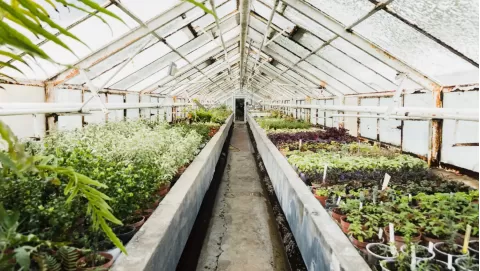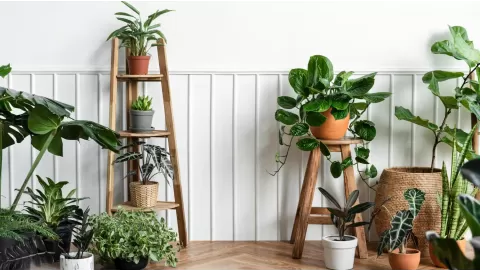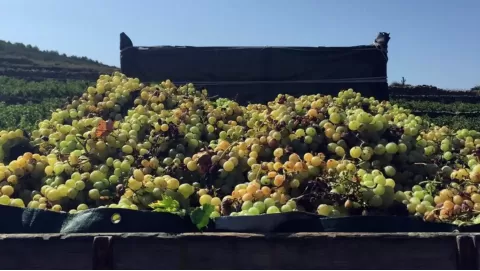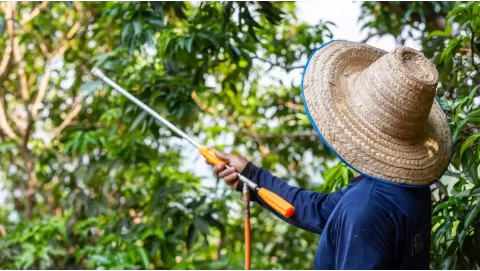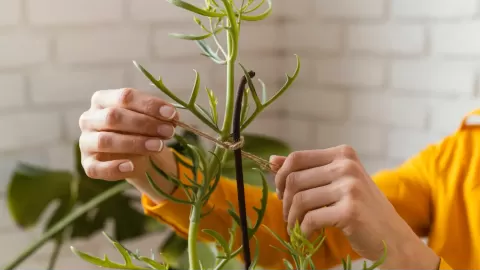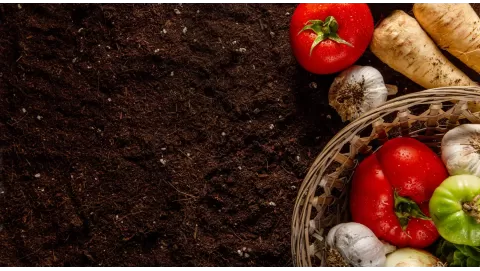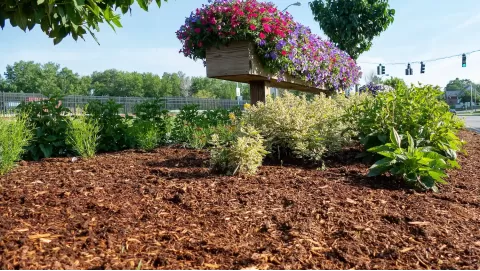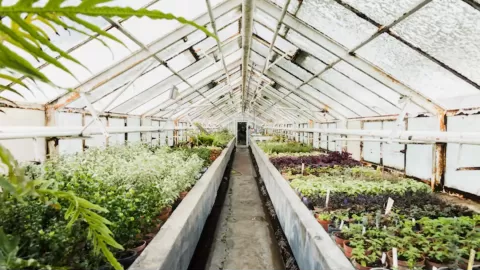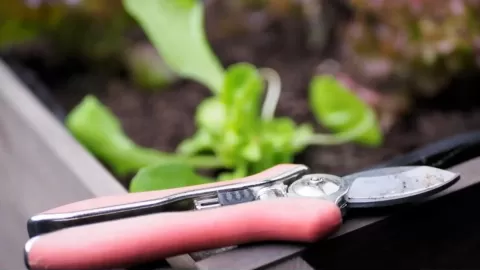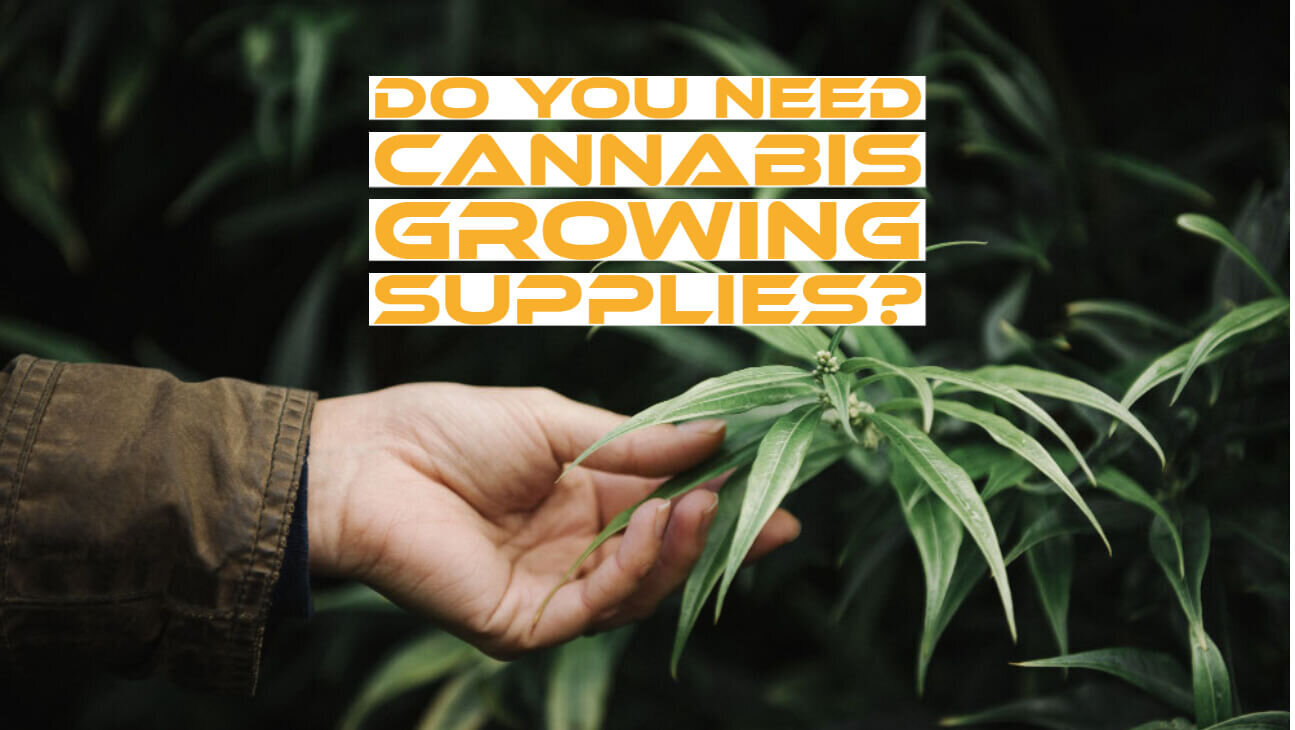
Do You Need Cannabis Growing Supplies?
In recent years, there has been a growth in the number of people interested in cannabis production. Gardening can be a gratifying leisure and a potentially successful business, and growing your supply of high-quality cannabis might be a lucrative enterprise in and of itself. Yet, cultivating high-quality cannabis requires more than just planting seeds and keeping your fingers crossed. It calls for a significant expenditure of time and effort, as well as the possession of relevant skills and access to appropriate resources.
Growing cannabis may be complicated, even for experienced farmers. Much more so for beginners. To ensure cannabis plants have all they require for healthy development and high-quality harvest, they must satisfy their requirements for sufficient lighting, nutrients, and environmental conditions. Ingredients for growing cannabis include everything from the proper lighting and temperature controls to the soil and nutrients the plants require to develop.
Growing cannabis successfully involves several essential components, like growing tents, lighting, fertilizers, and ventilation systems, among many other things. These materials are all necessary for growing cannabis. It doesn't matter if you're growing cannabis for the first time or you've been doing it for years: having access to high-quality growing materials is essential. Even someone with little to no gardening knowledge can ensure the health and growth of their plants if they have access to the appropriate tools.
High-quality materials may assist in developing and extending plant life, but they may also assist experienced gardeners in increasing production and quality. Use only high-quality growing materials to ensure the success of your cannabis harvest. This is the most critical factor in determining the harvest's outcome.
Investing in the appropriate instruments, supplies, and fertilizers will allow you to cultivate cannabis plants in a controlled environment that caters to their requirements, increasing the quality of the crop you bring in. It is essential, therefore, to have access to high-quality cannabis growing materials, regardless of whether the plant is being raised for recreational or medical purposes.
The Importance Of A Safe Environment
When cultivating cannabis, providing your plants with an environment in which their temperature and humidity can be precisely managed is one of the essential things you can do. Aspects like temperature, humidity, air movement, and lighting all play a role in this. The production of cannabis is highly dependent on the availability of sufficient illumination. Cannabis plants require light of a particular wavelength and intensity to reach their full potential.
Indoor farming makes use of artificial lighting systems that are designed to simulate the natural rays of the sun. A healthy growth pattern and maximum yield may be encouraged using the highest quality grow lights, which have the proper spectrum and intensity of light. While cultivating cannabis, it is essential to pay attention to the environment's temperature and humidity. Cannabis plants thrive in an environment with temperatures ranging from 18 to 27 degrees Celsius (between 65 and 80 degrees Fahrenheit), and varied amounts of humidity are required for each stage of the plant's growth.
Your plants will be protected against fungal diseases such as mold and mildew if the temperature is constant and the humidity level is low. The elimination of stale air and the prevention of the buildup of carbon dioxide are three benefits that may be gained by maintaining an adequate level of air circulation. It is of the utmost significance that this be done, especially in tight environments such as grow tents, where excess heat and moisture may quickly cause issues. Also requiring sufficient ventilation is the effective cultivation of cannabis.
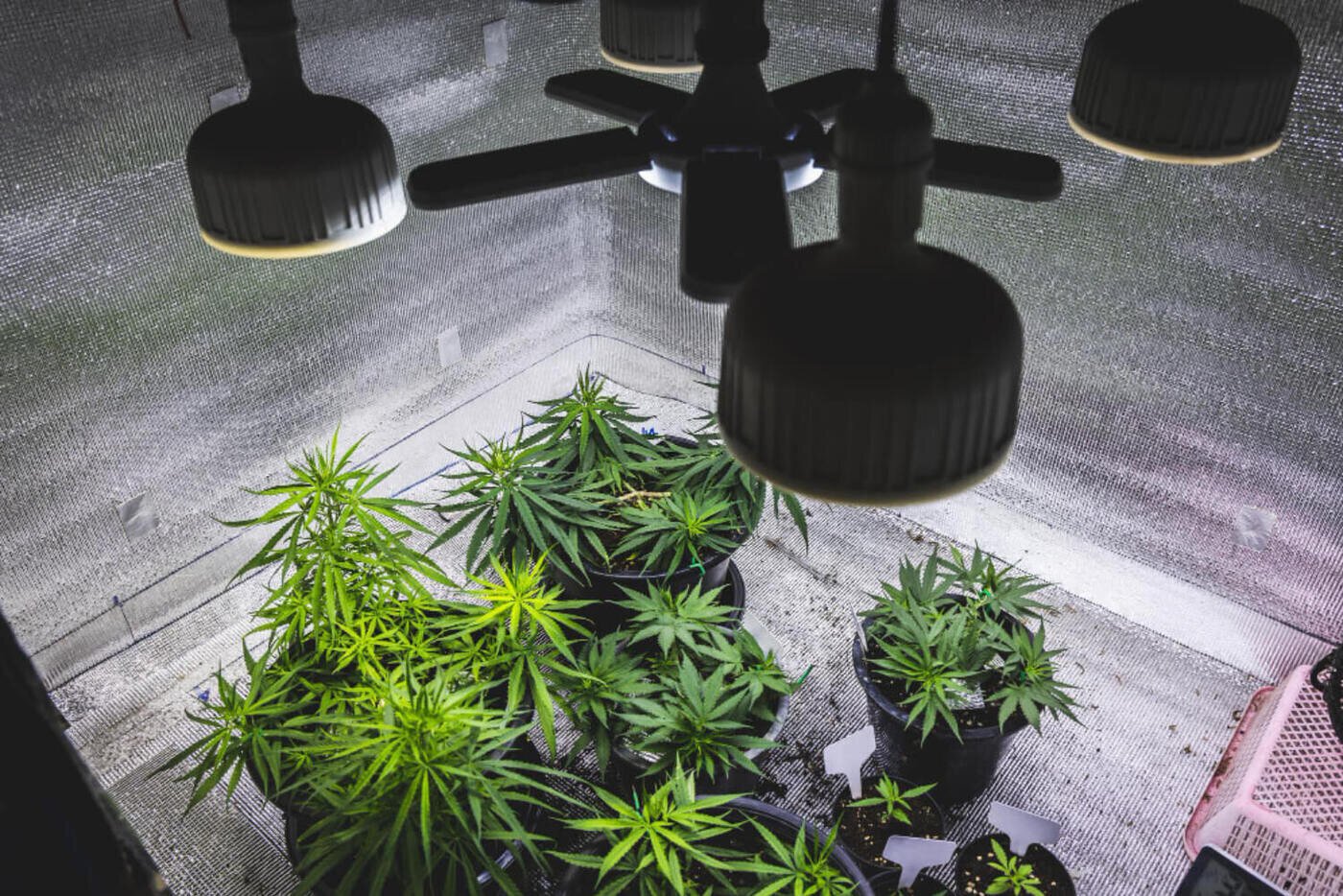
Growers frequently use a controlled environment, such as a grow tent or a grow chamber, to cultivate their plants. Grow tents are popular among indoor growers because of their inexpensive cost, ease of setup, and controlled environment for the plant's growth. Your plants will do very well in these confined surroundings because of the stable temperatures and humidity levels that are present there.
Grow rigs, along with grow tents, grow lights, and ventilation systems, are all helpful pieces of equipment for producing cannabis in an enclosed space. You may, for example, construct a self-contained habitat that does not require any care by using a grow tent. This environment gives you total control over your plant's development and does not require any upkeep. In the same vein, investing in high-quality lighting and ventilation systems may assist in automating essential phases of your growing process, decreasing the amount of time and effort necessary for successful output. This will allow you to grow more efficiently.
Beginner Or Experienced: The Benefits Of Marijuana Growing Supplies
Using cannabis growing materials is advantageous in many different ways, and this is true regardless of whether you are a complete novice or a seasoned master at growing weed. The most significant results may be obtained with cannabis growing materials, which expedite growth and enhance plant quality and production. The best results may be reached with the aid of cannabis-growing materials.
Cannabis cultivation materials can make the process simpler and more approachable for novice plant cultivators. For instance, grow tents offer a simple enclosure to assemble and maintain a clean environment. Grow tents provide you with complete control over the atmosphere in which your plants are able to flourish, and they do so without requiring any particular expertise or gear on your part.
Similarly, inexperienced growers who purchase high-quality lighting and ventilation equipment may achieve satisfactory results despite having limited experience and education. Automating numerous parts of the growing process with the correct technology is feasible, lowering the amount of time and effort necessary for optimum yield. Using cannabis growing materials, which can potentially improve both productivity and quality, may benefit professional gardeners considerably. For instance, if you have an excellent quality lighting and ventilation system, your plants may receive the precise spectrum and intensity of light they require for maximum development and yield. This is especially true if you are growing cannabis.

Growing crops using innovative techniques such as hydroponics and aeroponics, for example, can also improve agricultural output and quality. Cannabis cultivators with more experience may profit from using cannabis-growing materials while experimenting with new cannabis strains or growth techniques. Consider utilizing a grow tent to keep your experimentation apart from the rest of your plants. So, you can conduct experiments and improve your procedures without putting the health of your entire harvest or its yield in danger.
Growing materials for cannabis have the potential to save you time and money while also improving the quality and output of your crop. The use of high-quality equipment can automate many of the phases in the cultivation process, cutting down on the amount of time and effort needed to achieve maximum yield. Keeping things under control helps you avoid spending money on eradicating pests or treating illnesses that might otherwise be necessary.
Indoor Vs. Outdoor Marijuana Cultivation
Outdoor cultivation is the easiest and least expensive method since it uses the sun and other natural resources. Nevertheless, it needs careful planning and a place that receives ample sunshine throughout the growing season. If there is more room in the garden, there will be more opportunities for the plants to thrive, which will result in larger harvests.
The expenditures associated with the setup and operation of an indoor cannabis grow are higher than those associated with a regular outdoor grow. Nevertheless, the grower has complete control over the environment where the plant is grown and may locate their operation virtually anywhere. You may anticipate that the marijuana you cultivate inside will be relatively strong.
Growing Marijuana: Choosing The Right Strain
It is preferable to cultivate a strain that you love using and utilizing yourself. When the plants have reached full maturity, you will have sufficient quantities of the dried buds because each plant may yield anything from a half pound to a whole pound. You should never cultivate cannabis if there is even a remote possibility that you could end up with a strain that you don't like. Various strains impact many people in various ways, and similarly, different people have a wide range of preferences on what they enjoy and don't like.
When selecting a strain to cultivate, here are some additional considerations. Depending on the laws of your state, you may or may not be able to purchase cannabis seeds or clones from a dispensary if cannabis use is legalized in your state. Even if you are successful, you will be limited to utilizing DNA created inside your state because seeds and clones cannot cross state boundaries.
Some strains thrive in warmer temperatures and are simpler to cultivate outside, while others, because of their more bushy and compact growth, do better in the more controlled environment of an indoor grow chamber. In addition, various types have varied requirements, are more prone to being attacked by pests, and may do better in a strictly controlled environment. Talking to other producers in your area is a great way to get information about which cannabis strains thrive in a particular environment.
Growing cannabis effectively is feasible in small and big places; however, before beginning a garden, it is necessary to assess your available room. Growing cannabis successfully is possible in both small and large locations. Some plant types need more time to develop into mature forms than others. If you are in a hurry, use strains that blossom in 8–9 weeks rather than ones that flower in 12 weeks.
The height of plants programmed to bloom automatically will be dramatically lowered. There is a need for additional cultivation efforts, such as a more involved nutrition plan, more strenuous activity, and careful monitoring of environmental elements. If you don't have much experience growing anything, you'll need time, patience, and knowledge to master most of these techniques.
Essential Marijuana Growing Tools Every Cannabis Enthusiast Needs
What exactly do they require for the plants to thrive? These are some of the essential components necessary for the cannabis growing process. You could be familiar with the cannabis plant or have some experience with the fundamentals of beginning seeds. If you so choose, you can start cultivating your very own garden immediately.
Producers are constantly on the lookout for certain cannabis cultivation elements to maintain plants that are both healthy and appealing. What exactly is it that you want assistance with? If you want to cultivate your cannabis, you will require eleven different things. The following things have been incorporated into the package:
- Weed seeds
- Grow room/tent
- Carbon filter
- Grow lights
- Pots/containers
- Growing medium
- Nutrients
- Ventilation
- Thermometer
- pH meter
All of these elements are necessary for the continued existence of marijuana plants and their further growth.
Weed Seeds
The seeds of marijuana are an essential component of the cannabis plant's inputs. There are many various strains of cannabis available; thus, it is necessary to select the one that is most beneficial to you. There are three different classifications of weed seed altogether. There are auto-flowering, feminized, and standard strains available for your consideration.
The term "autoflower" refers to the fact that these seeds will begin producing flowers without any additional assistance from the grower. This period starts a few weeks after the seeds have been planted. Because it has such a short life cycle, the plant is perfect for people who have never grown anything. Nevertheless, the yield from wide auto-flowering seed varieties is lower than other kinds.
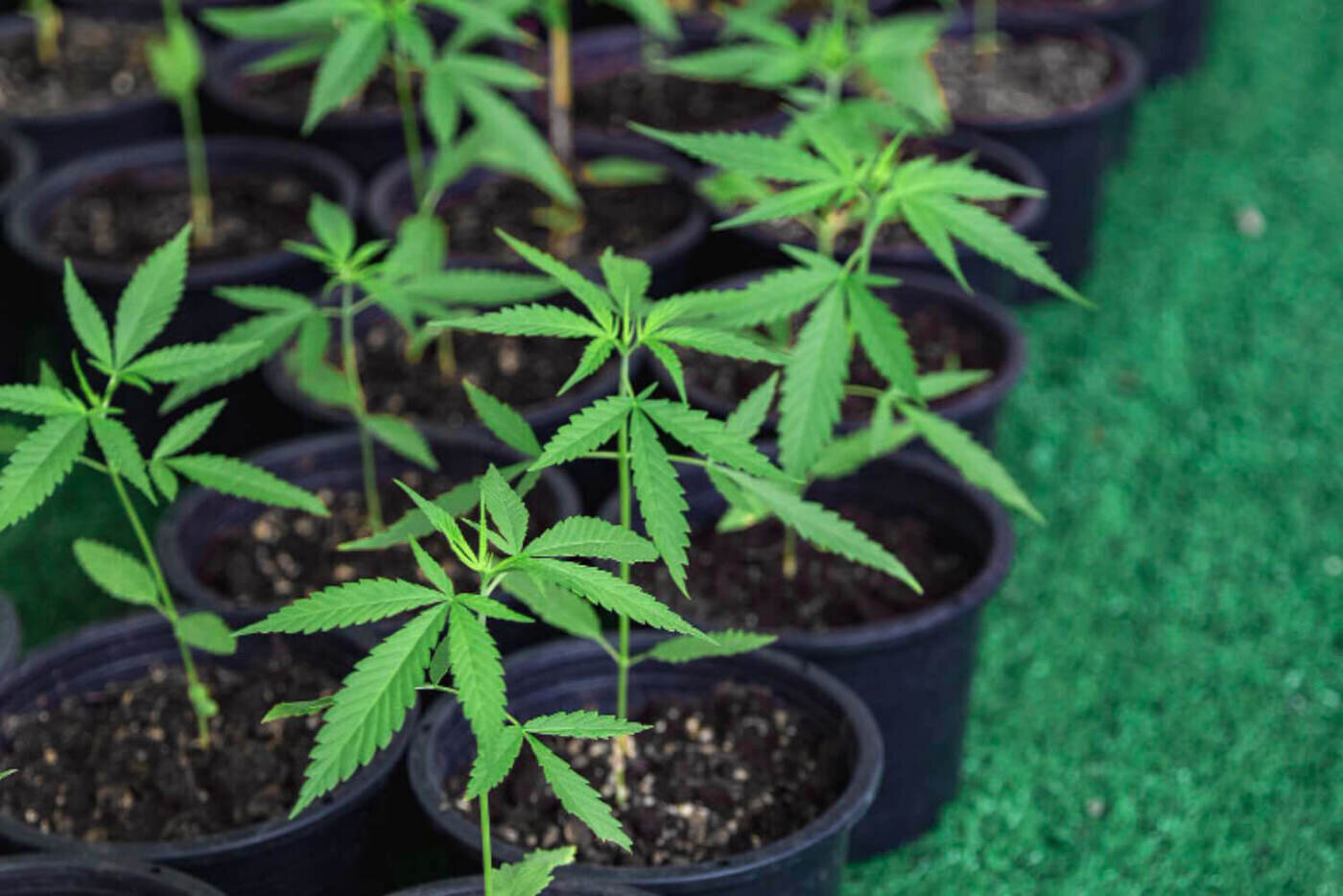
A feminized seed has undergone genetic modification so that it can generate a plant with feminine characteristics. Farmers favor this strategy because it eliminates the risk of their crops being pollinated by male plants, which would otherwise be undesirable. When germinated, feminized seeds have the potential to develop into vigorous, prolific plants. Despite this, there is a slight chance that some of the offspring will be hermaphroditic, and the likelihood of this happening rises if the parent plant has this quality.
The hermaphrodite potential is present in naturally occurring strains, which means they can yield male plants. Yet, some producers acquire regular seeds. These producers must pay additional care to guarantee that no male plants are included in the harvest since they buy standard seeds to serve as a starting point in the process of creating their distinctive strains of cannabis.
Grow Room And Tent
You will need a grow room to cultivate marijuana indoors. This is a must. Grow rooms are popular among farmers because they give them greater control over the environment in which their plants are grown. The user can change the type of soil and the amount of light present.
Committing a whole room to serve as a growing place is optional. Utilizing a closet as a site for growing seeds is not inappropriate. It is necessary to have additional land to improve the yield. It is essential to remember that certain types can grow to heights of more than a foot, with branches that spread well beyond the limitations of the container.
If they do not have a pot specifically made for a tiny space, many individuals will utilize a grow tent instead. A grow tent may easily fit inside a closet with more than enough room. The water tightness of the floors is a feature that comes in handy. You have greater control over other aspects of the environment, like humidity. The tents have the potential to aid in energy conservation and the promotion of healthy air circulation.
Carbon Filter
A carbon filter uses activated carbon as one of the components to clean the air and water. Because of its capacity to absorb pollutants from the air, some people consider it a carbon scrubber. Lint, mildew, dust, and smoke are just some of the particles that may be removed from the air by using a filter.
What function do carbon filters serve in the equipment used to cultivate marijuana? A filter aims to prevent odors from escaping by enclosing them inside the device. While in bloom, weed plants may produce an unpleasant and unpleasant odor to the human nose. You want the smell to spread throughout only some of the house.
Your water treatment setup should include a carbon filter. They remove potentially hazardous contaminants from the water, such as chlorine and smells, while preserving the health benefits of the minerals in the water. The gadget has a hole at the rear that allows stale air to exit, keeping the air from becoming stale.
Farmers can increase their yields by using carbon filters with other techniques, such as installing them in their air conditioning systems. It is possible to identify strains of cannabis that generate less of a scent, which is one thing you may do if you want to do anything about the smell. After your seedlings have become established, you will no longer need to be concerned about the room smelling unpleasant.
Lights For Growing
The sun is the primary source of light that is utilized when cannabis is grown outside. If you wish to cultivate plants inside, you may choose from several different methods. The compact fluorescent (CFL) bulb is one lighting alternative that does not require additional tools. CFL lights are better for the environment regarding energy efficiency but cannot supply adequate light for more than one or two plants.
High-intensity discharge (HID) lamps consistently deliver good yields, even though they are uncomfortable to touch because of their extreme heat. There is also the possibility of employing HID lights, which may be MH or HPS in terms of their spectrum. MH bulbs generate light that is bluer in hue, whereas HPS bulbs create redder light in the shade.
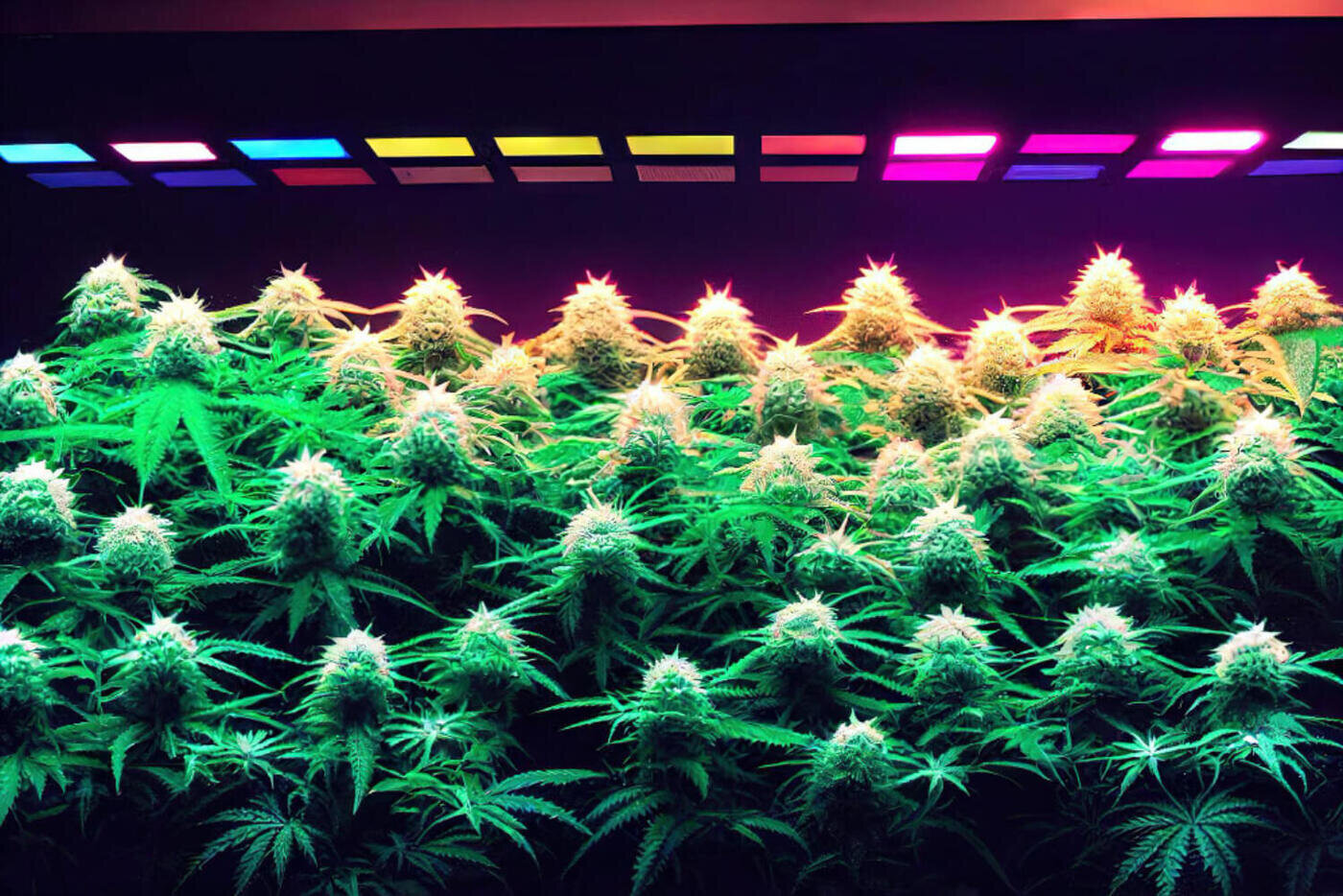
In addition to reducing the expenses associated with cooling the grow room, using LED grow lights is possible throughout plant development's vegetative and blooming phases. Yet, these lights do not comply with any of the industry standards already in place. There are LED bulbs with a spectrum similar to that of the sun. Yet, the preliminary expenditure could be substantial.
The search for the ideal indoor grow light may be narrowed down with considerations such as the size of the growing room and the kind of seeds being grown. A compact fluorescent light bulb, often called a CFL, is your best bet for indoor gardening if you have limited space. Using a 400-600W LED light for healthy plants that produce larger harvests is adequate.
Pots And Containers
Selecting a container that is suitable for the plants is of the utmost importance while growing marijuana plants. As the plant grows, you will require an increasing number of containers. The necessary dimensions change depending on the tension. Because of its more contained development, for example, an auto-flowering plant is an excellent choice for being grown in pots of varied sizes.
You can access a vast selection of containers, as with grow lights. The first item is a simple flowerpot sold everywhere and can be purchased at an affordable price. Look for one that has a hole in the base through which the water may drain. The smart pot is an example of one of these variants. Cloth pots are a container that promotes more vigorous plant development by allowing air to circulate around the plant's roots while containing the plant.
A smart ceramic pot is imitated in plastic by a device known as an air pot. Because the plant has air vents on the sides, it needs more consistent watering. Farmers will frequently make use of a container known as a hempy bucket. Drainage holes on sparse buckets are positioned a few inches from the bottom of the bucket. Watering the plant less often is acceptable, but the fertilizer solution should be allowed to stand still for a short time.
Growing Medium
You will need several essential supplies to cultivate cannabis successfully, the most important of which is the growing medium. The significant roles and requirements of a growth medium are to support the weight of the plant, enable root respiration, and provide simple access to water and nutrients. Your plant will develop steadily and healthily if the roots have sufficient room, water, air, and nutrients. If any of these are included, the plant's development will be improved.
Grow medium, sometimes referred to as substrates, are the environments in which your plant's roots may develop and thrive. Some examples of grow mediums are soil, coco coir, water, and other similar substances.
Cannabis Cultivation In A Soil Mix
In soil combinations that include precisely the correct quantity of solids (organic and inorganic components) and gaps that allow air and water to flow, weeds can flourish. A healthy root system is only possible to maintain with consistent aeration. As a result of the fact that plant roots must have spaces of air between solid particles, supplementing the soil with perlite, vermiculite, or coco coir can help relieve soil compaction.
The nutrients included in items like compost and worm castings may assist in kickstarting the development of your plants. Peat moss-based soil combinations also function very well. However, these mixtures require a small quantity of dolomite to keep a healthy pH, and they do not contain the nutrients your plant needs.
Coco Coir Is Used For Growing Marijuana
Coco coir is a popular growth medium produced by spinning the fibers of coconut husks together. It is possible to use it instead of soil or in conjunction with perlite to improve airflow. It performs an excellent job of preventing the soil from compacting and holding onto water and nutrients without smothering the roots. Moreover, it prevents the soil from drying up.
It might take some time and some trial and error before you figure out what circumstances are best for your plants, even though there are a lot of advantages to growing in coco. Reading, taking notes, and doing pH and EC testing are examples of activities that fall under this category. Because coco coir is an inert medium, providing the appropriate quantity of nutrients is essential throughout each step. It is possible to lessen the amount of calcium and magnesium lost by rinsing the coco, buffering it, and combining it with perlite.
Cultivating Marijuana In Hydroponic Systems
The term "hydroponics" refers to a wide variety of well-liked and fruitful ways for cultivating cannabis in which a nutrient-rich and aerated water solution is fed directly to the roots of the plants. These methods are referred to collectively as "hydroponics." You can cultivate your plants in several distinct habitats, including deep water culture, ebb and flow, or a drip system. The attachment of the roots to any one of a variety of substrates is how the roots get the support they need. Perlite, clay pebbles, and Rockwool are other examples of similar materials.
Nutrients
A cannabis plant's growth requires a different mixture of nutrients in a specific proportion at each stage of its life cycle. Nitrogen, phosphorus, and potassium are the three primary macronutrients that may be discovered in food. Nitrogen is essential during the vegetative stage of a plant's life cycle for the growth and development of the plant. If it did not have it, cannabis would not be able to produce chlorophyll or absorb the sun's rays to generate energy.
Phosphorus is essential for the development of seeds and roots. If the growth media lacks phosphorus, it may manifest in the roots as indications of underdevelopment. It is possible that a plant will never produce any blooms if it does not reach the stage when it may bloom. It is the responsibility of the producers to ensure that their plants have sufficient for them to develop into robust plants with enormous blossoms.
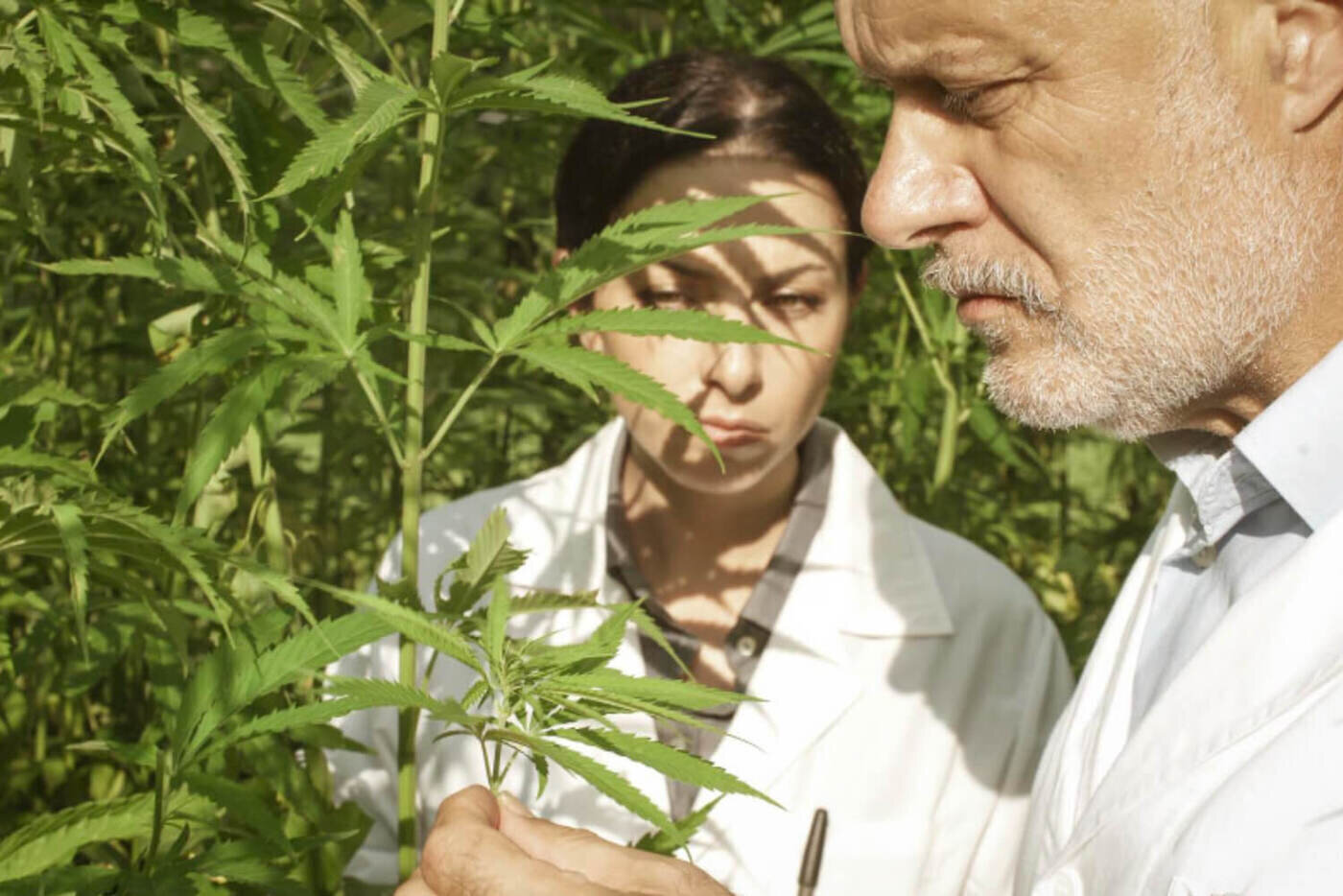
The plant cannot regulate the quantities of salt or water in its environment without potassium. The nutrient facilitates the opening and closing of the stomata, which are the holes found in the leaves. Potassium facilitates the exchange of carbon dioxide, water, and oxygen into the atmosphere.
Magnesium, copper, iron, and calcium are some of the essential micronutrients that cannabis requires. They boost a plant's ability to take up minerals and speed up its metabolism. They should be administered in significantly lower quantities than those of the three macronutrients. Cultivators should provide plants with the appropriate amount of each mineral to avoid nutrient burns.
Ventilation
The cannabis crop's exposure to air movement is also of the utmost significance. The airflow may give the plants some of the oxygen they desperately need. The process of photosynthesis can be sped up by the presence of air in the environment. The plants will certainly die if there is insufficient air movement. If the grow chamber is kept at temperatures and humidity levels that are too high for an extended period, it risks becoming infected with unwanted organisms and illnesses.
The term "passive intake" refers to the process when air rushes to your cannabis plant organically through gaps in your room's wall or the tent's roof. The port on a grow tent is vital for adequate ventilation. The cultivator has two choices regarding how to get fresh air into the space.
Active intake is the term used to describe the method used to provide air into the grow chamber. Using a fan is a common component of dynamic intake ventilation systems. This is one of the most effective techniques to increase air circulation in a hydroponics tent or greenhouse.
It is best to put a powerful fan, so air moves above and below the plants but never directly on them. A small oscillating fan may create wind across a large area, which can then be directed in any direction. It may help prevent damage to the plant's stems and leaves.
Thermometer
A thermometer is an essential tool that can be utilized to detect the temperature of marijuana plants accurately. It can determine whether the temperature inside or outside is excessively hot or cold. The effects of colder temperatures on plant growth are unknown. Some plants continue to show no signs of stress and continue to grow despite the possibility that their production will decrease.
Alterations occur in the optimal temperature range as a result of aging. Temperatures that are higher than 80 degrees Fahrenheit also inhibit the growth of plants. In conditions with a lot of moisture, they could have parasites and root rot issues. Cannabis plants, when cultivated, acquire a more vital tolerance for temperatures that are extremely high or low.
A bright and warm setting is ideal for the growth of young plants. The temperature in the room should be between 68 and 77 degrees Fahrenheit for optimal comfort. During the vegetative stage, temperatures might reach as high as 86 degrees Fahrenheit at their peak.
Temperatures in the range of 68 and 77 degrees Fahrenheit are optimal for the cannabis plant while it is blooming. In buds, there is no risk of terpenes igniting and causing a fire. There are grow lights that generate more heat than others. Maintain vigilance over the temperature so that you can ascertain whether or not any adjustments are required.
Testing pH Levels
Using a scale that ranges from 1 to 14, the acidity or alkalinity of the soil may be determined. Acidic substances are those that have a pH value that is lower than 7. For cannabis plants to take up nutrients from the soil, the pH level has to be between 6 and 7. Whether the number is either low or too large, there may be a need for more food and water.
Monitoring the pH level is an essential step. Using a pH meter for regular checks is one of the best ways to ensure a fruitful harvest. Getting a pH meter is another choice that is uncomplicated and quick. When the meter has been calibrated, a precise reading may be obtained by placing it into the medium where the organism grows.
Using pH solutions permits for either an increase or decrease in acidity. To get the meter back into the ideal range, add small quantities while keeping a close watch on it.
Keeping Adequate Airflow And Moisture
It is critical to pay special attention to the growing environment's ventilation and humidity while growing cannabis. It is essential to provide adequate ventilation for your plants so that they are not exposed to stale air or a buildup of carbon dioxide, both of which have the potential to be harmful to the plants. On the other hand, even while moisture is essential for plant growth, improper management can cause illnesses to develop in the plants.
Installing ventilation systems is one approach to guarantee adequate airflow and humidity in a space. They contribute to removing stale air, which stops the accumulation of potentially hazardous gases and ensures adequate ventilation. With the assistance of a ventilation system, which also supplies oxygen to your plants, you can keep the temperature and humidity of your grow room at a consistent level.
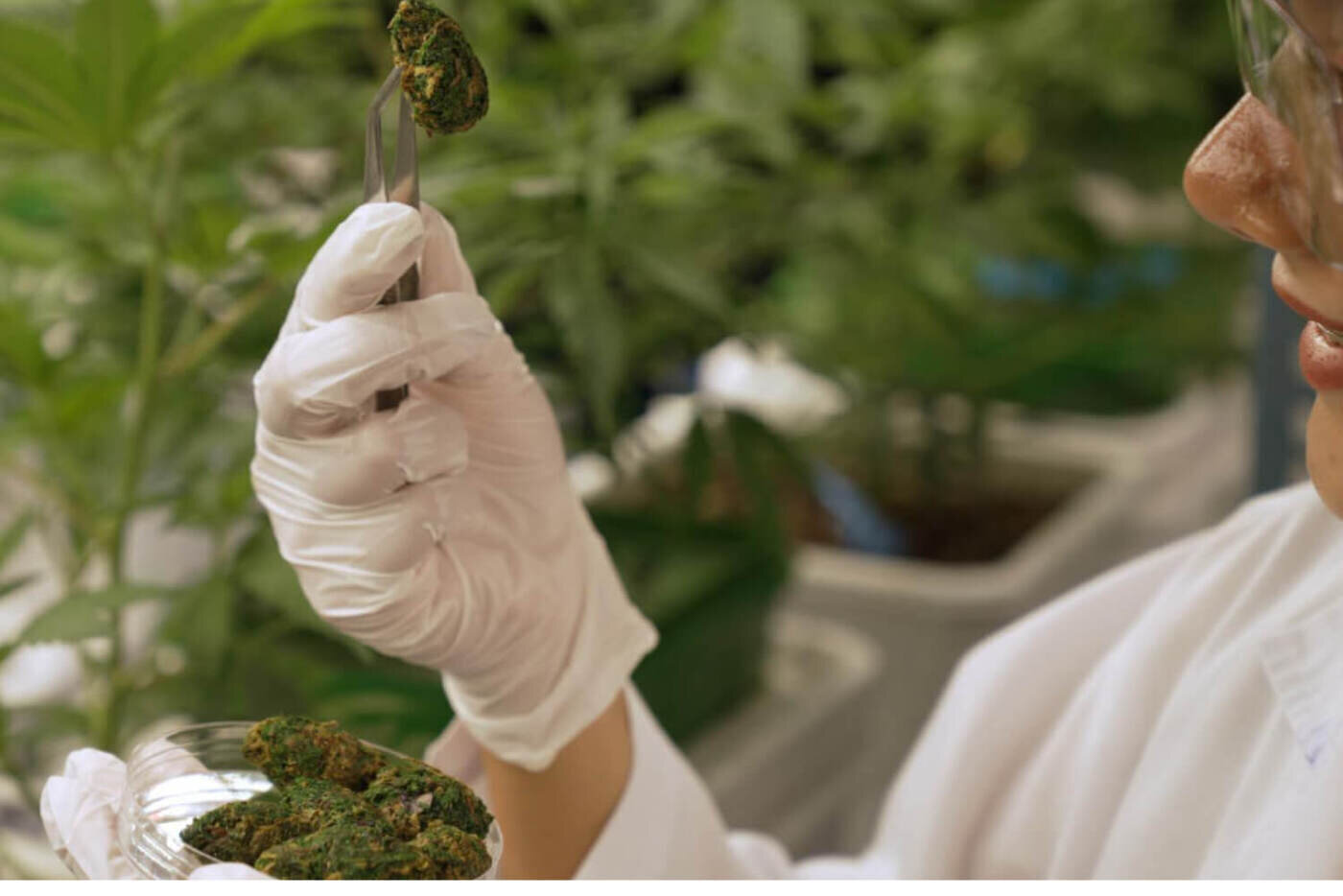
Mold and mildew can be detrimental or even fatal to your plants if moisture is abundant in the air. Cannabis plants need the correct quantity of moisture to develop and grow to their full potential. Growers generally employ humidifiers and dehumidifiers in their operations so that the growth environment can maintain the optimal humidity level. By using the appropriate watering strategies, such as measuring the soil's moisture level with a moisture meter, it is possible to prevent overwatering and thereby restrict healthy development.
It is essential to employ suitable ventilation, humidity management, and water procedures to give plants the circumstances that will allow them to thrive while also preventing the formation of potentially harmful gasses and moisture. When growing in enclosed environments like grow tents, it is even more critical to maintain the correct ventilation and moisture levels. Your ability to maintain these settings will determine the health of your plants and the quantity they produce.
Farmers have options besides ventilation systems for ensuring adequate air flow and humidity levels in their environments. Increasing the airflow throughout your growing space and lowering the amount of unhealthy air allowed to accumulate can be accomplished, for example, by utilizing fans. An air purifier may assist you in removing potentially hazardous particles and gasses from the air surrounding your plants, which can help you improve the overall air quality.
The Bottom Line
In recent years, there has been a rise in the number of people who are interested in cultivating cannabis for their own use. Growing your own supply of high-quality cannabis may be a lucrative business all on its own, making gardening not only a pleasurable pastime but also a potentially rewarding commercial endeavor. The cultivation of high-quality cannabis, on the other hand, needs more than simply sowing seeds and crossing one's fingers. It requires a large investment of time and effort on the part of the user, as well as the presence of applicable skills and access to relevant resources.
Cultivating cannabis may be a challenging endeavor, even for seasoned agriculturalists, even more so for those just starting out. It is necessary to provide cannabis plants with enough lighting, nutrients, and environmental conditions in order to guarantee that they will have all they need for healthy development and a harvest of the highest possible quality. Growing cannabis requires a number of components, including the right kind of soil, the right kind of fertilizers, the right kind of lighting, and the right kind of temperature controls.
It is best to develop a strain that you adore using and that you use on a regular basis yourself. When the plants have achieved their maximum potential, you will have adequate numbers of dried buds because each plant has the potential to produce anything from a half pound to an entire pound of harvest. You should never produce cannabis if there is even a sliver of a chance that you may wind up with a strain that you don't like, even if that chance is extremely small. Many different strains have many different effects on many different people, and in the same way, different people have a wide variety of preferences on what they appreciate and what they do not enjoy.
While growing cannabis, one of the most important things you can do is create an environment for your plants in which the temperature and humidity can be carefully controlled. This environment should be as close to ideal as possible. This is impacted by a variety of factors, including but not limited to temperature, humidity, airflow, and illumination. The availability of adequate lighting is one of the most important factors affecting the production of cannabis. In order for cannabis plants to achieve their greatest potential, they require light of a certain wavelength and intensity.
These are some of the most important elements that must be present in order for cannabis to be successfully grown. You could have some knowledge of the cannabis plant, or you might have some familiarity with the principles of starting seeds. If you want to get started on growing your very own garden right now, that option is open to you. The production of cannabis requires a number of specific components, and growers are always on the search for these components in order to grow plants that are not only robust but also visually beautiful. In what specific way do you require support at this time? Eleven distinct things are essential for the cultivation of cannabis, which you will need to do.
Disclaimer: This material is for informational purposes only and should not be relied on for legal, medical, financial, or any other form of professional advice.

